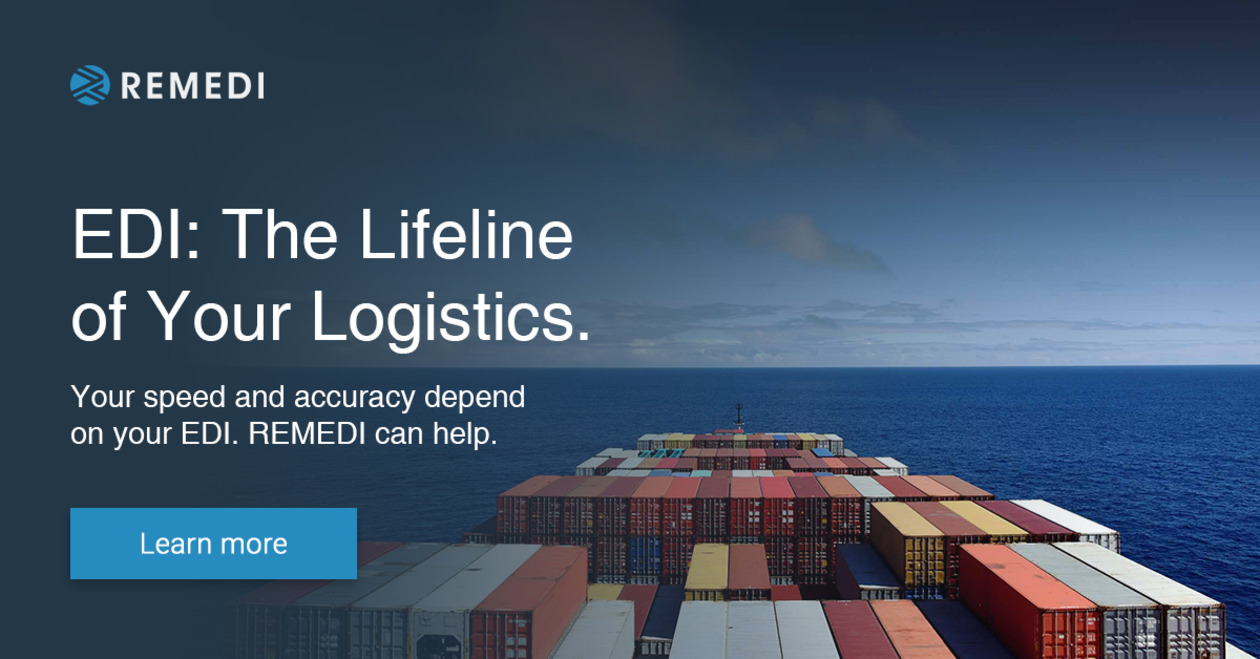
Among the many transaction sets of the Electronic Data Interchange ANSI X12 standard is the EDI 315. Part of the X12I Transportation transaction set, the EDI 315, also known as the Status Details (Ocean) Transactions form, is an electronic document used by ocean carriers to update buyers and sellers about the status of their goods traveling by ship.
EDI 315 is an important component of overseas shipping logistics, as it keeps players all along the supply chain informed of cargo movements in real-time. This improves shipment reliability and arrival predictability.
What is the EDI 315 Status Details?
The ASC X12 EDI (Accredited Standards Committee X12, Electronic Data Interchange) standard is the most commonly used EDI standard in North America. Its forms, or transactions, are divided into several sets, each pertaining to a specific industry and managed by a subcommittee. These sets include finance, government, insurance, and transportation.
As part of the transportation group, EDI 315 allows authorized entities to access information related to a specific cargo container or shipment. It also lets authorized parties learn details pertaining to multiple events or status updates for a single piece of cargo. It is meant to convey details for both a single event or status related to multiple shipments or cargo containers and multiple events or statuses for a single shipment or container.
The EDI 315 Standard
Because it was developed to give accurate, near-instantaneous EDI status details about shipments to authorized parties along the value chain, the EDI 315 must contain specific data points. These include:
- Date and time of shipping
- Purchase order number(s)
- Contact information of the shipper, carrier and receiver
- Shipment details such as container weight(s) and dimensions
- Expected delivery date and time
- Port or terminal name and location
- Any shipment changes, such as delays, and the reason for the changes
How It Is Used
International shipping can present risks for both buyer and seller. EDI 315: Status Details (Ocean) is meant to allay some of the concerns inherent in long-haul commerce by increasing visibility into operations.
Trading partners using EDI 315 will receive Status Details messages, which are set by the system to send automatically when certain, predetermined shipping occurrences–such as pickup, port arrival, and offloading–take place. Many partners in the supply chain require the sending of EDI 315 when these events happen, as a means of more accurately tracking their shipments.
Some cargo carriers also use EDI 315 to notify partners of unplanned events that may affect shipment or delivery. Global health emergencies, severe storms, port stoppages, and other generally unforeseen occurrences can slow ship travel, resulting in delivery delays, and recipients awaiting packages will receive an automated EDI 315 informing them of the delay.
Related Transactions
There are several key transactions preceding, following or closely related to the EDI 315. These include the following:
- EDI 310: The Freight Receipt and Invoice (Ocean) Transaction Set is an automated request for payment for an oceanic freight shipment. It is sent by the ocean carrier to the payer, generally the cargo receiver or shipper.
- EDI 312: The Arrival Notice (Ocean) Transaction Set (312) is used to provide trading partners with information necessary for the recipient of the shipment to know, such as customs information, payment due and the estimated arrival date and time.
- EDI 313: The Shipment Status Inquiry (Ocean) Transaction (313) Set gives the information needed for an authorized entity to ask the ocean carrier about the status of a specific shipment.
- EDI 317: The Delivery/Pickup Order Transaction (317) is intended to give importers and/or their agents delivery or pickup orders for port or marine terminal operators.
- EDI 997: The Functional Acknowledgement (997) confirms receipt of other EDI documents and is usually sent by retailers after they receive the EDI 315.

What Are the Benefits of EDI 315 For Ocean Freight?
There are multiple reasons for a logistics company to use the EDI 315 in their ocean shipping transactions. Some of these are:
- Helps track goods: By allowing for the real-time location of shipped goods, the EDI 315 helps both shippers and receivers keep track of their packages. This is particularly important if the recipient is not the last stop on the supply chain and further shipping involving the cargo must still take place.
- Lets shippers evaluate carriers: The EDI 315 lets shippers assess the performance of their ocean carriers. An outstanding ocean carrier may be able to use the EDI 315 to build trust (and continued business) with a shipper.
- Allows buyers to plan: Knowing when an expected delivery will get to them allows recipients to make better timed, more accurate preparations, such as pickup arrangements and space in storage, prior to the arrival of their cargo.
- Reduces manual tasks: As with most other EDI transactions, EDI 315’s automated information entry and updates sending mean far fewer manual tasks for human workers.
- Greater accuracy: With a reduction in human intervention comes a reduction in error, too. The EDI 315 is far more likely than manual entry to get names, addresses, order numbers, payment amounts and more correct the first time.
Potential Drawbacks
Despite the significant help it provides, the EDI 315 can sometimes cause headaches for logistics firms. Some of the more common hassles experienced are:
- Challenges with reference identification: Occasionally a logistics company will be unable to confirm accurate reference information, including shipment status and terminal location, with their customers.
- Missing form-header information: Among the key data elements contained in the EDI 315 are headers, such as the interchange control header, the functional group header and transaction set header. If information is not received for these headers, human intervention is required.
- Inaccuracies: When inaccurate data is received by the EDI system (perhaps because of the use of erroneous "qualifiers" or data structures not recognized by a trading partner system) the result can be an EDI error code.
Conclusion
Logistics companies doing international commerce today must EDI 315 in order to stay current and competitive. The transaction set saves them time and hassle and increases firms’ customer satisfaction while it speeds the pace of business.
However, implementing and maintaining an EDI solution requires near-constant management and maintenance by specialized information technology professionals. Remedi can help.
The lifeline of your logistics.



